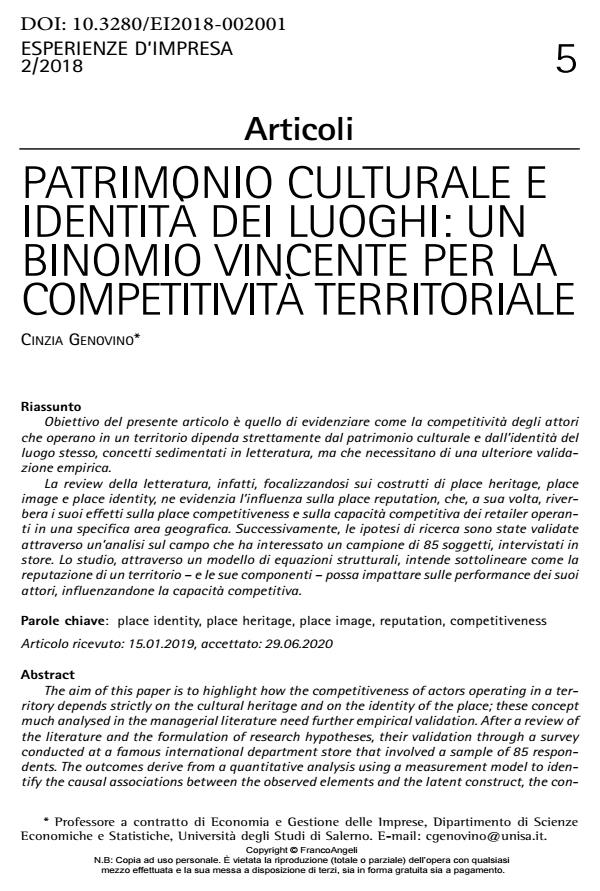Patrimonio culturale e Identità dei luoghi: un Binomio vincente per la Competitività territoriale
Titolo Rivista ESPERIENZE D'IMPRESA
Autori/Curatori Cinzia Genovino
Anno di pubblicazione 2021 Fascicolo 2018/2
Lingua Italiano Numero pagine 16 P. 5-20 Dimensione file 355 KB
DOI 10.3280/EI2018-002001
Il DOI è il codice a barre della proprietà intellettuale: per saperne di più
clicca qui
Qui sotto puoi vedere in anteprima la prima pagina di questo articolo.
Se questo articolo ti interessa, lo puoi acquistare (e scaricare in formato pdf) seguendo le facili indicazioni per acquistare il download credit. Acquista Download Credits per scaricare questo Articolo in formato PDF

FrancoAngeli è membro della Publishers International Linking Association, Inc (PILA)associazione indipendente e non profit per facilitare (attraverso i servizi tecnologici implementati da CrossRef.org) l’accesso degli studiosi ai contenuti digitali nelle pubblicazioni professionali e scientifiche
Obiettivo del presente articolo è quello di evidenziare come la competitività degli attori che operano in un territorio dipenda strettamente dal patrimonio culturale e dall’identità del luogo stesso, concetti sedimentati in letteratura, ma che necessitano di una ulteriore validazione empirica. La review della letteratura, infatti, focalizzandosi sui costrutti di place heritage, place image e place identity, ne evidenzia l’influenza sulla place reputation, che, a sua volta, riverbera i suoi effetti sulla place competitiveness e sulla capacità competitiva dei retailer operanti in una specifica area geografica. Successivamente, le ipotesi di ricerca sono state validate attraverso un’analisi sul campo che ha interessato un campione di 85 soggetti, intervistati in store. Lo studio, attraverso un modello di equazioni strutturali, intende sottolineare come la reputazione di un territorio - e le sue componenti - possa impattare sulle performance dei suoi attori, influenzandone la capacità competitiva.
Parole chiave:Place identity, place heritage, place image, reputation, competitiveness
Cinzia Genovino, Patrimonio culturale e Identità dei luoghi: un Binomio vincente per la Competitività territoriale in "ESPERIENZE D'IMPRESA" 2/2018, pp 5-20, DOI: 10.3280/EI2018-002001